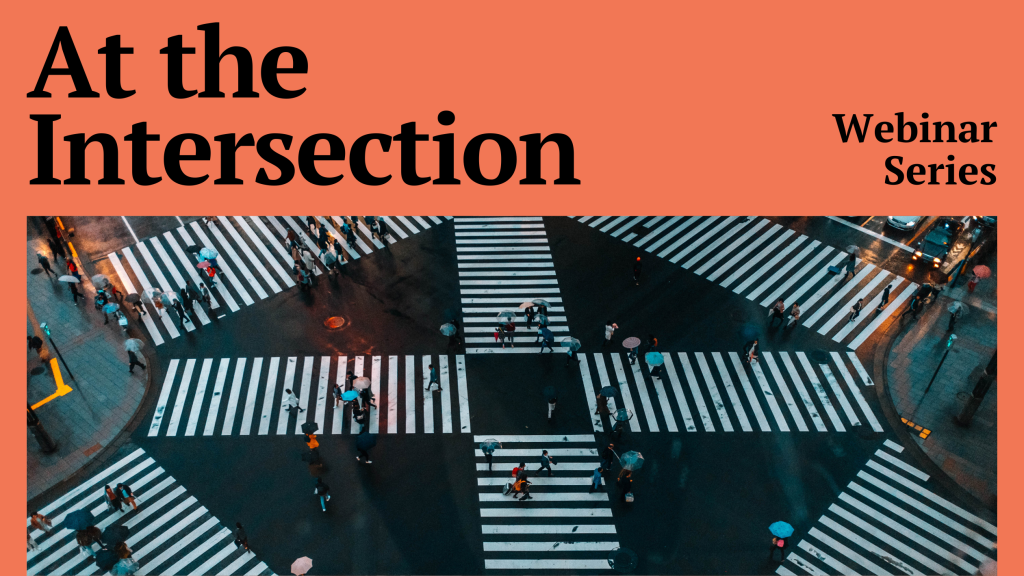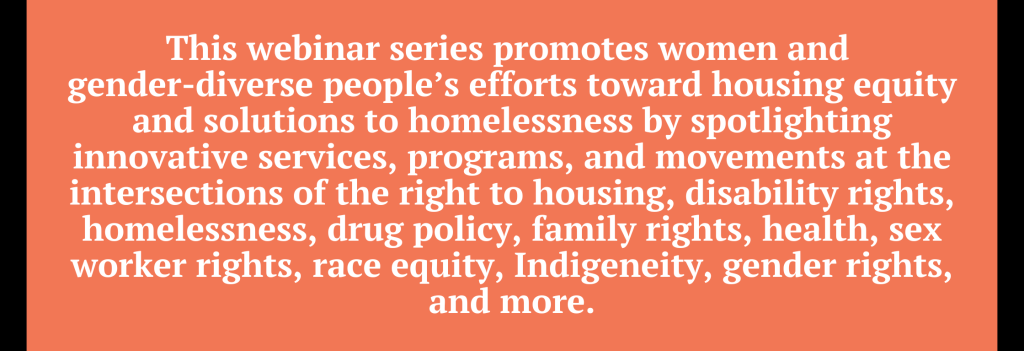

Upcoming Webinars
Please check back here as we update this section often!
Archive
Addressing Homelessness during Pregnancy for Women & Gender-diverse People (February 6, 2024)
Download the Slide Deck Here // Link to “A Path to Safety” Video
This webinar shared the results of a one-day symposium held in Toronto in June 2023 that aimed to address the siloed approach to housing provision for pregnant women and gender-diverse people experiencing homelessness. Over 60 people attended the symposium, including people with lived experience of homelessness during pregnancy, interdisciplinary service providers, policy makers, and researchers.
Even the Beaver Has a Home: An Indigenous-Led Conversation on Claiming the Right to Housing (October 6th, 2023)
The National Indigenous Housing Network hosted an info session at the Secure Indigenous Land Tenure Association conference on 4 upcoming engagements which aim to amplify the voices of Indigenous women, Two-Spirit and gender-diverse peoples.
The insights that are shared at these gatherings will be a critical addition to the upcoming historic human rights review of the government’s failure to prevent homelessness for women and gender-diverse people.
Watch to learn more about this exciting opportunity for Indigenous women, Two-Spirit and gender-diverse peoples to come together and claim their right to housing!
Gendered Evictions in Financialized Housing Markets across Canada
Why is the financialization of housing a gender justice issue? And how is it creating a wave of gendered evictions across the country?
Check out this webinar hosted with the National Right to Housing Network for answers! We discuss how financialization disproportionately affects marginalized women and gender-diverse people, as well as rights-based solutions to this issue.
Claiming our Right to Housing: Historic Human Rights Review Begins! (May 31st, 2023)
What is the Human Rights review process? Why does it matter? How can I get involved?
In this session, we discuss the recent announcement from the Federal Housing Advocate on establishing a human rights review on the failure to prevent and end homelessness for women and gender-diverse people.
Watch this video to learn what this process means for you as a rights-holder & how you can get involved!
Creating a Safer Drug Use Space at YWCA Hamilton (April 24th, 2023)
In this webinar, YWCA Hamilton brings together peer workers, space coordinators, harm reduction workers and a physician to discuss the successful development of a safer drug use space for women, trans and non-binary people experiencing homelessness. Check it out to hear about their incredible impact!
Click here to watch the introduction video on YWCA’s program.

